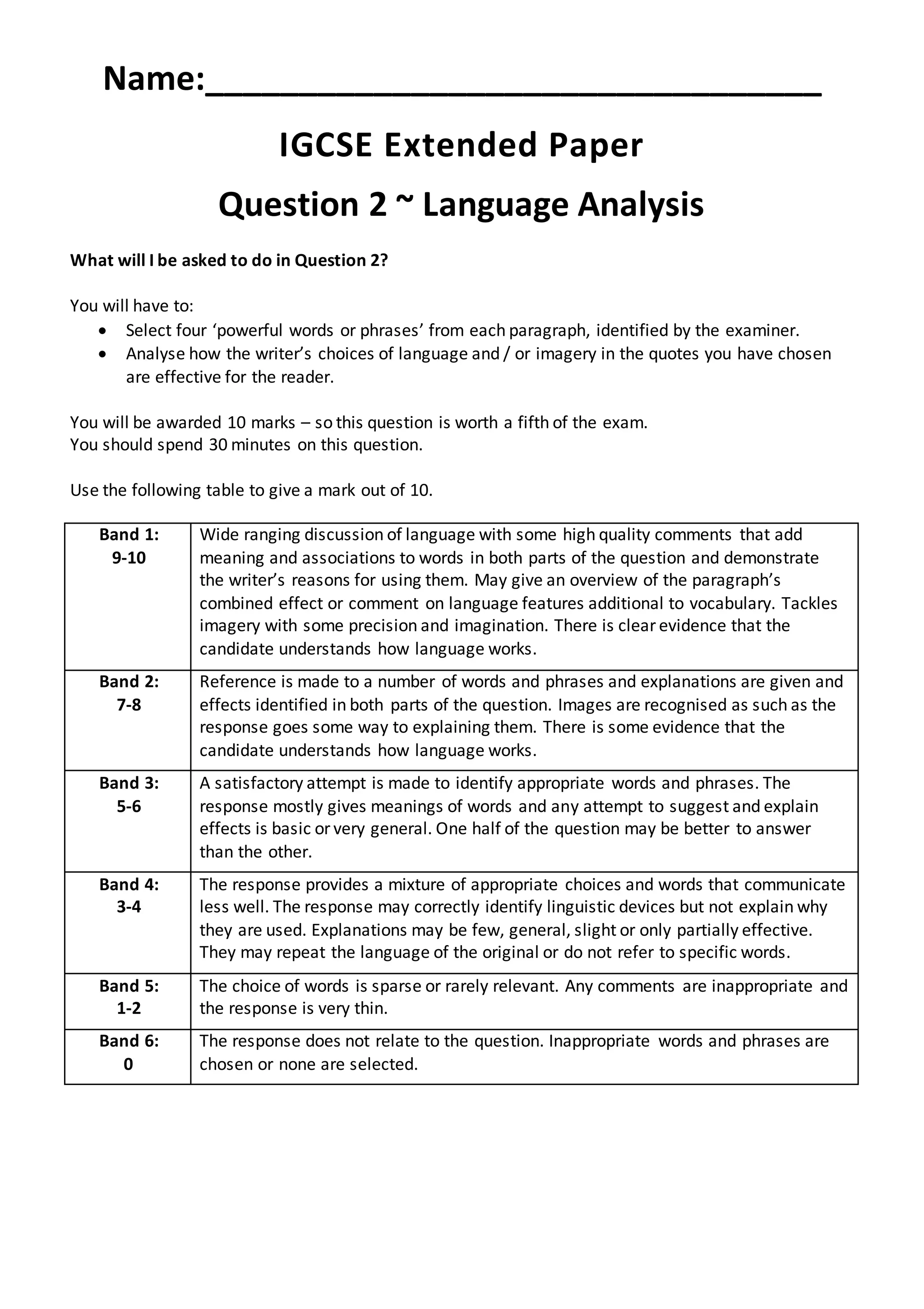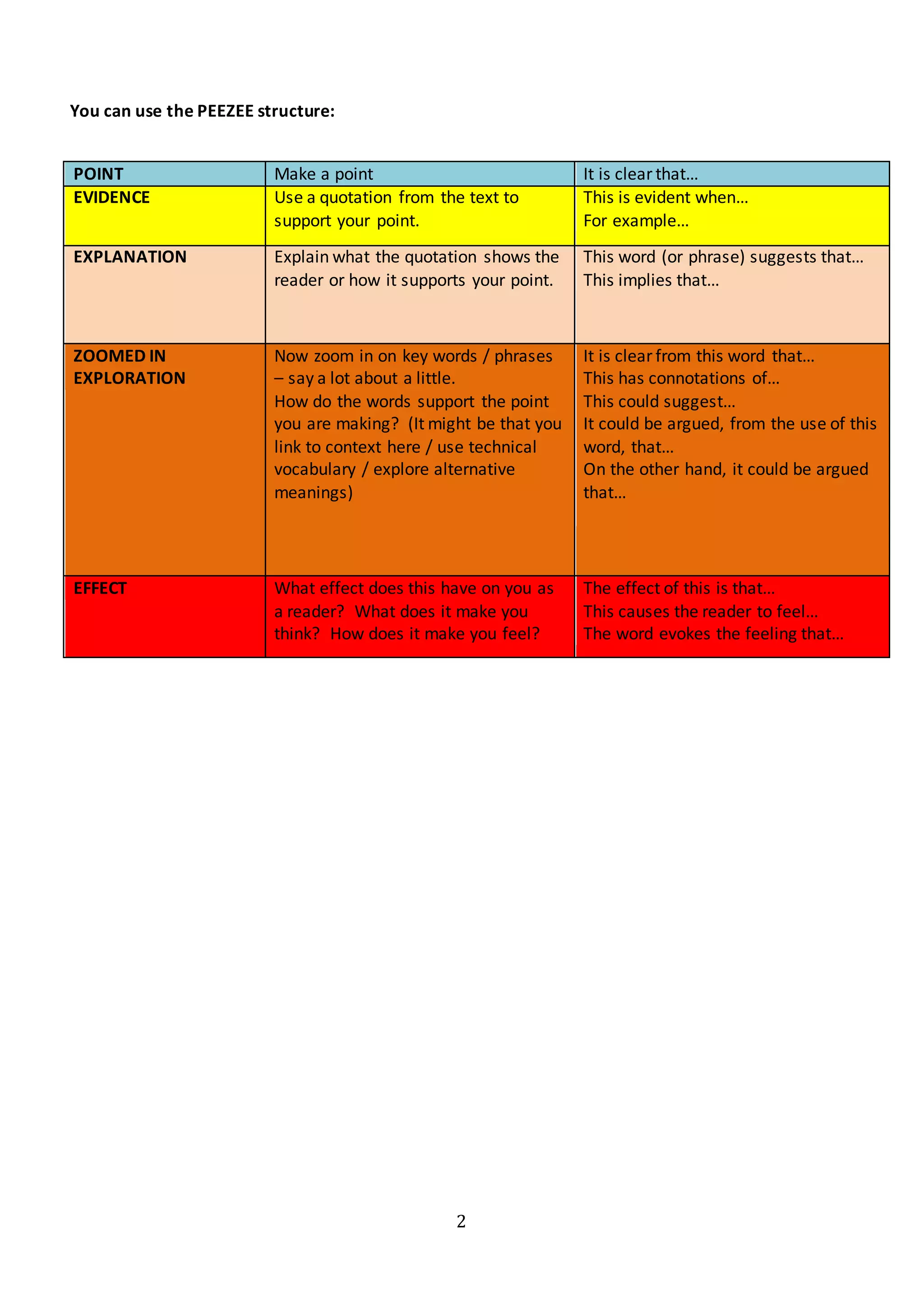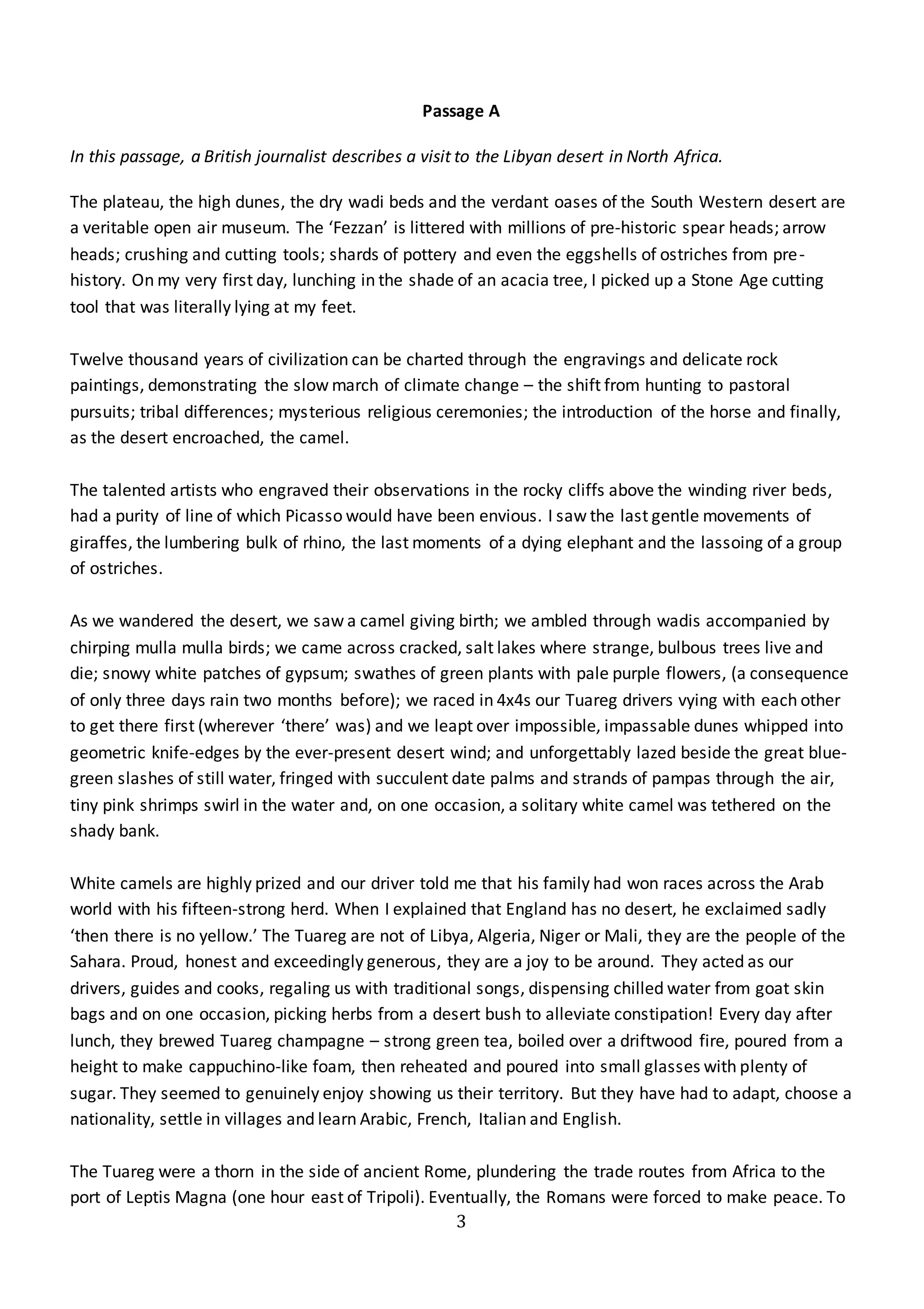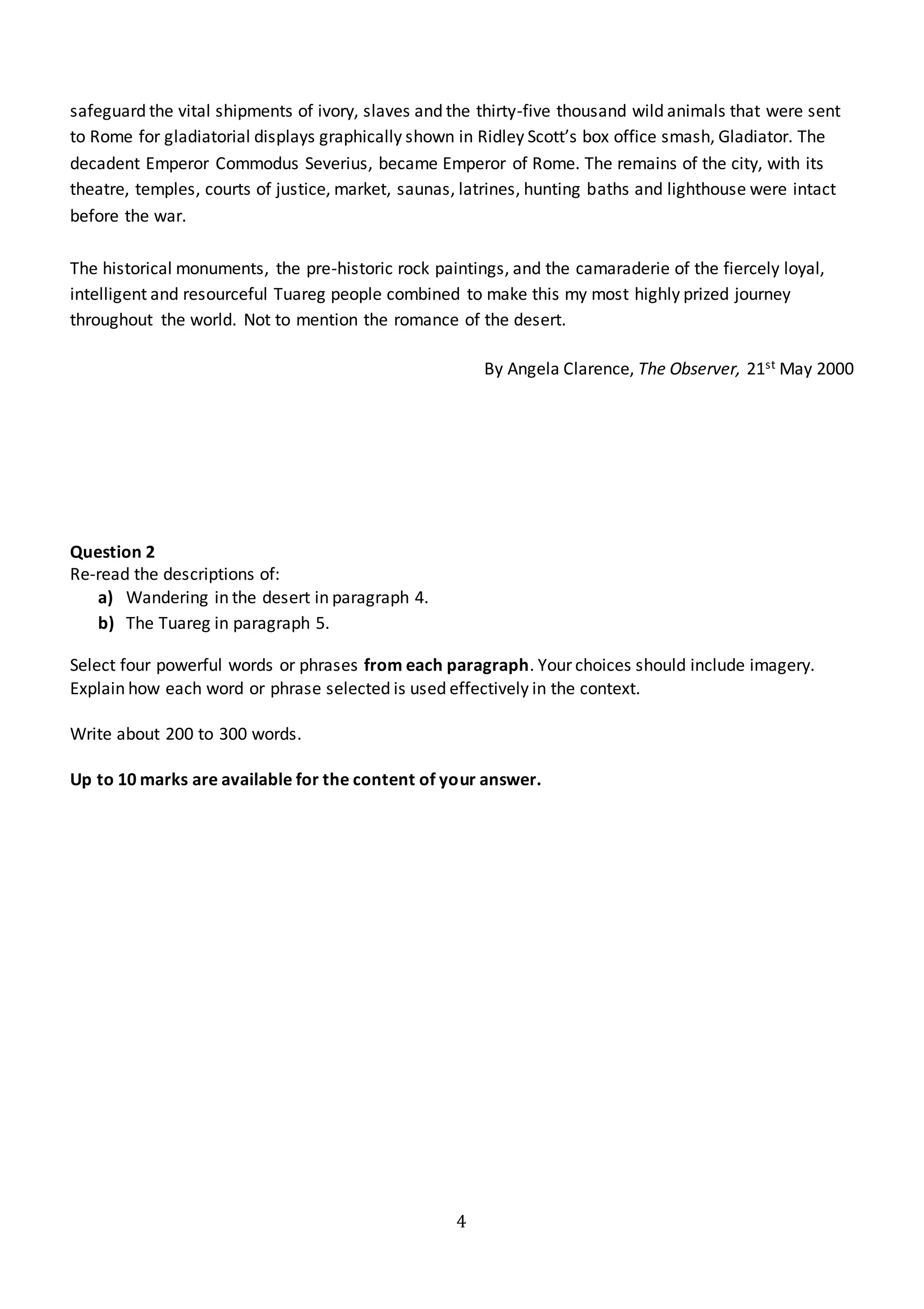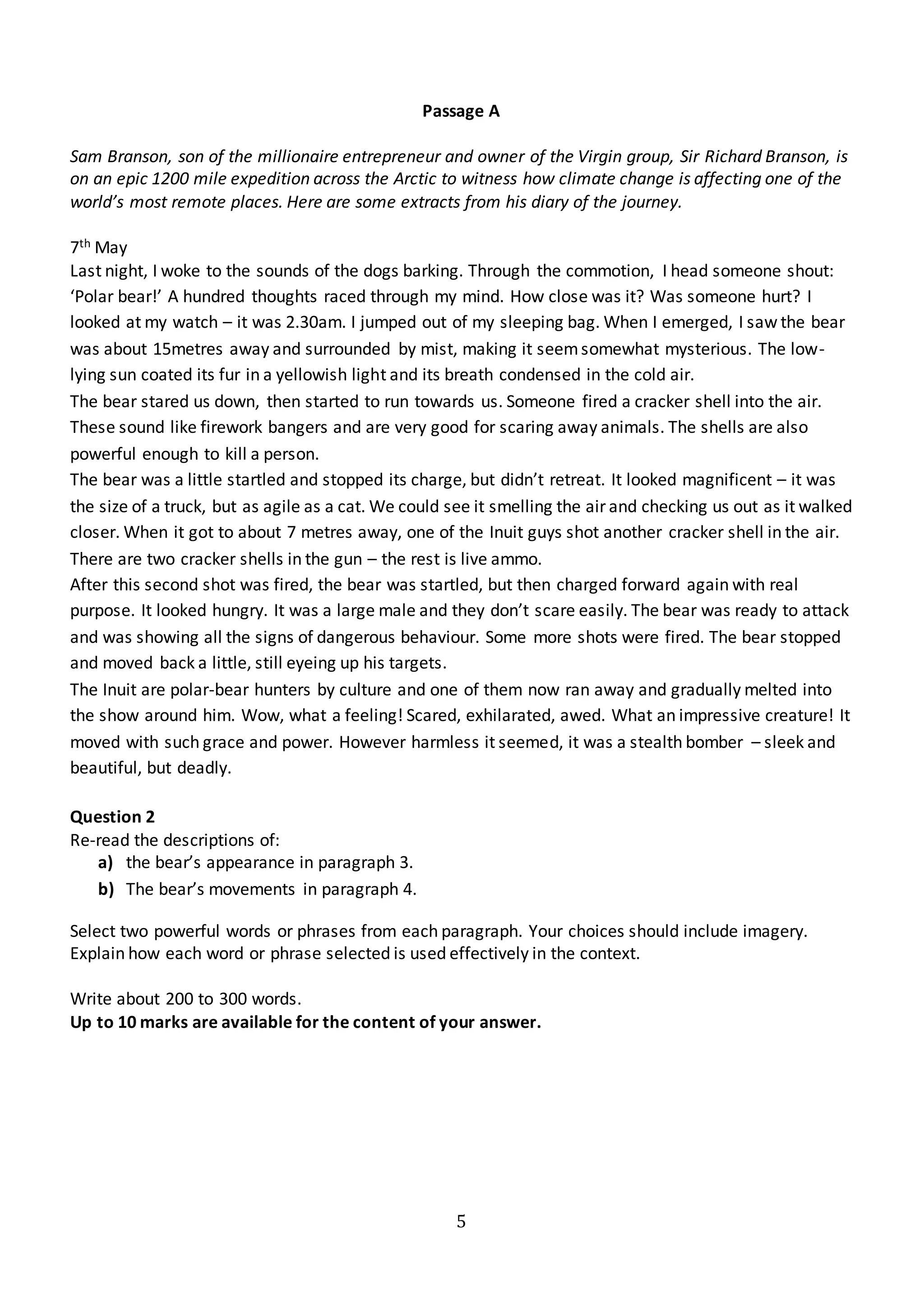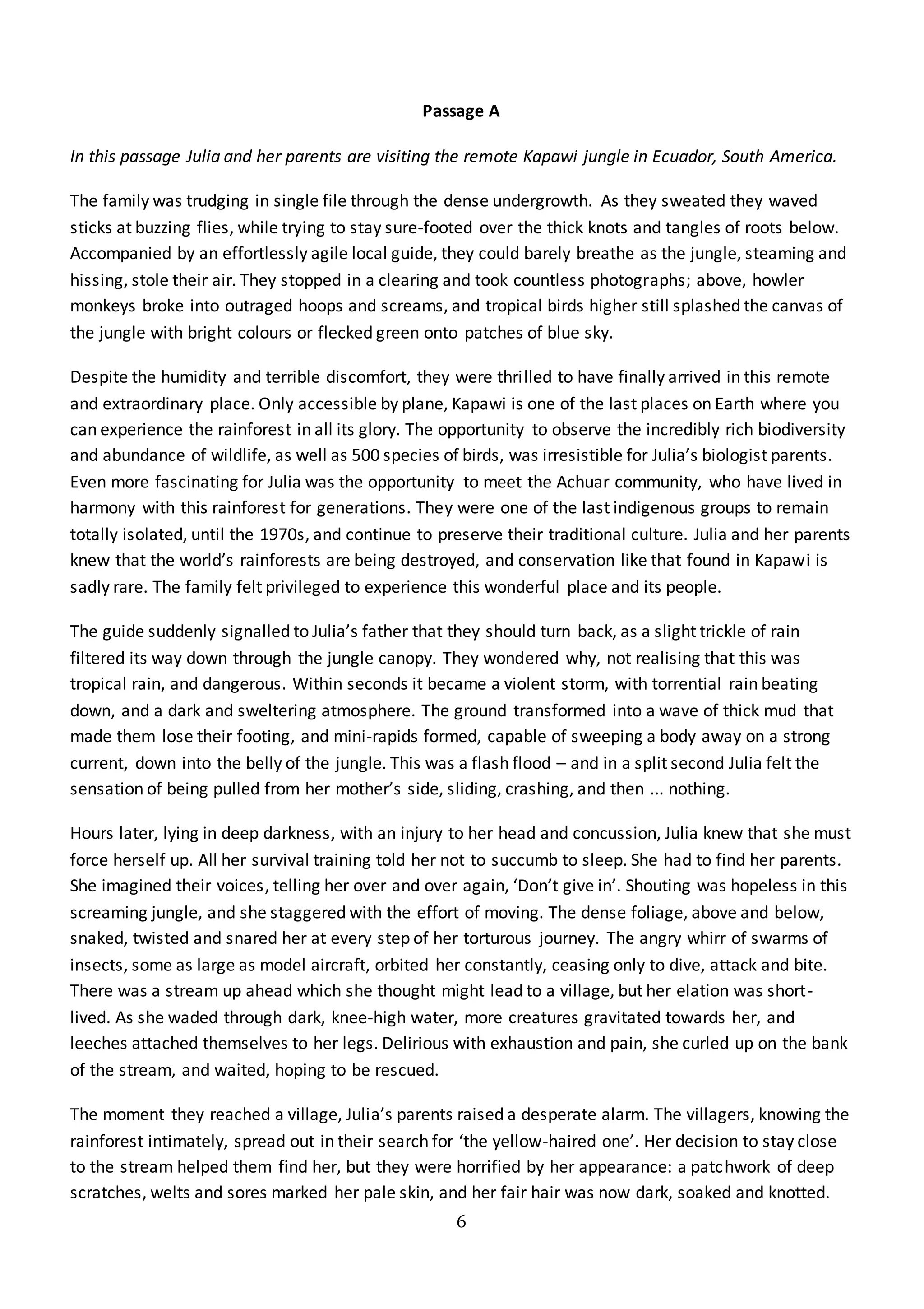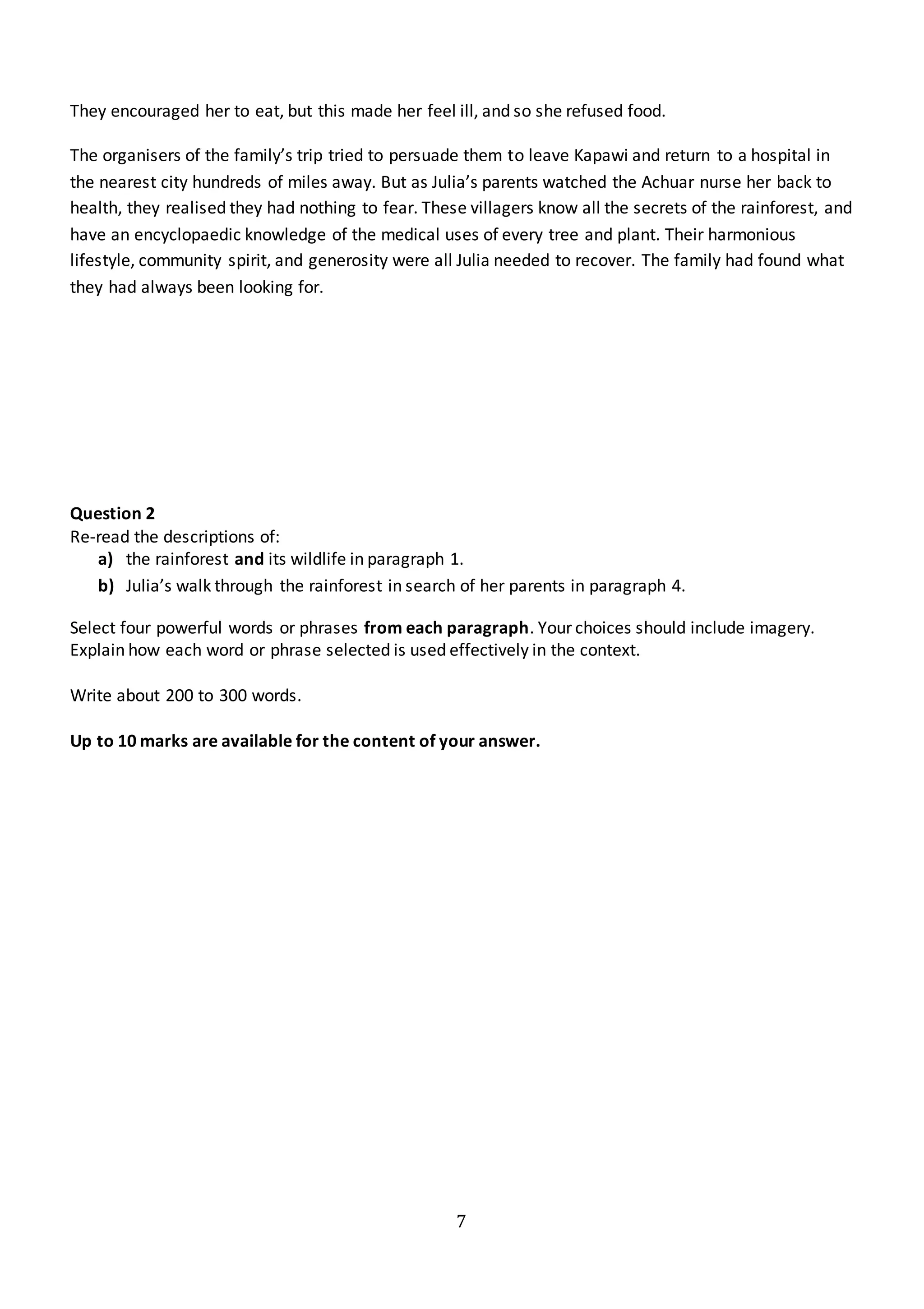This passage describes Julia's experience getting lost in the Kapawi jungle in Ecuador after being separated from her parents during a flash flood.
In paragraph 1, the jungle is described as "steaming and hissing" as Julia and her family struggle through the "dense undergrowth" accompanied by "howler monkeys" and "tropical birds."
In paragraph 4, Julia's difficult walk through the jungle in search of her parents is portrayed through vivid imagery, with the foliage "snak[ing], twist[ing] and snar[ing] her" and "swarms of insects" attacking her as she staggers through in a "torturous journey."
The summary effectively captures the key
